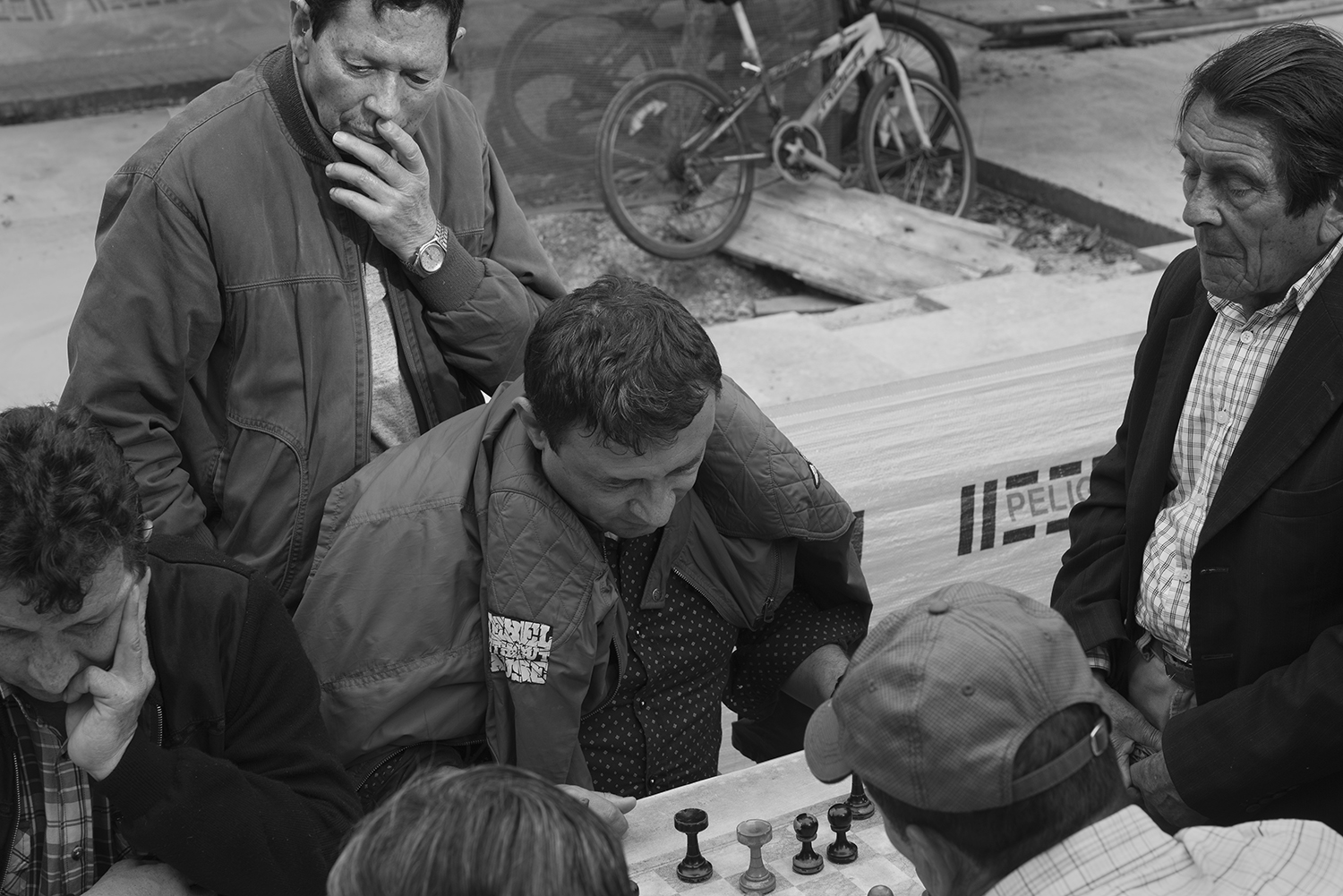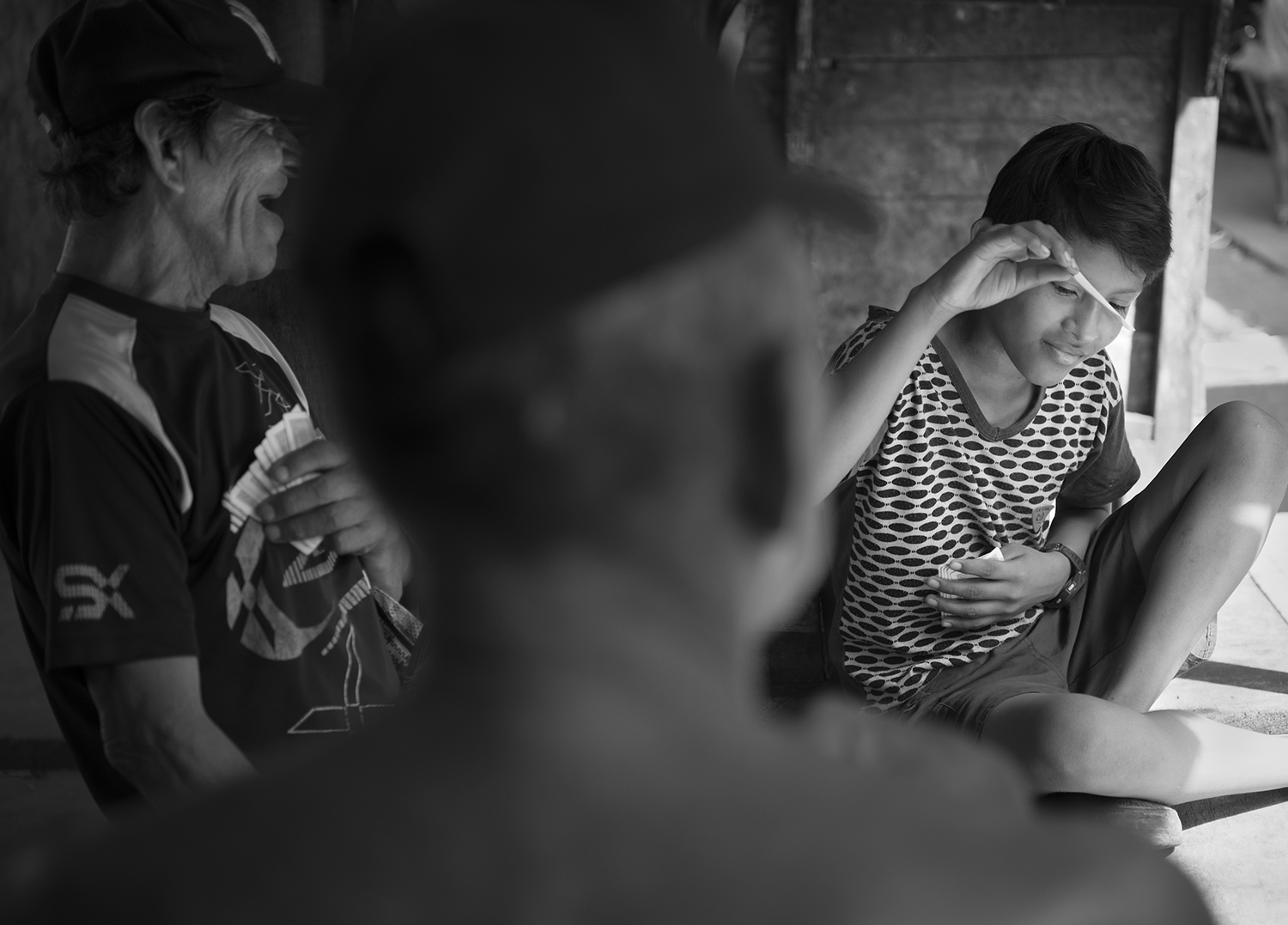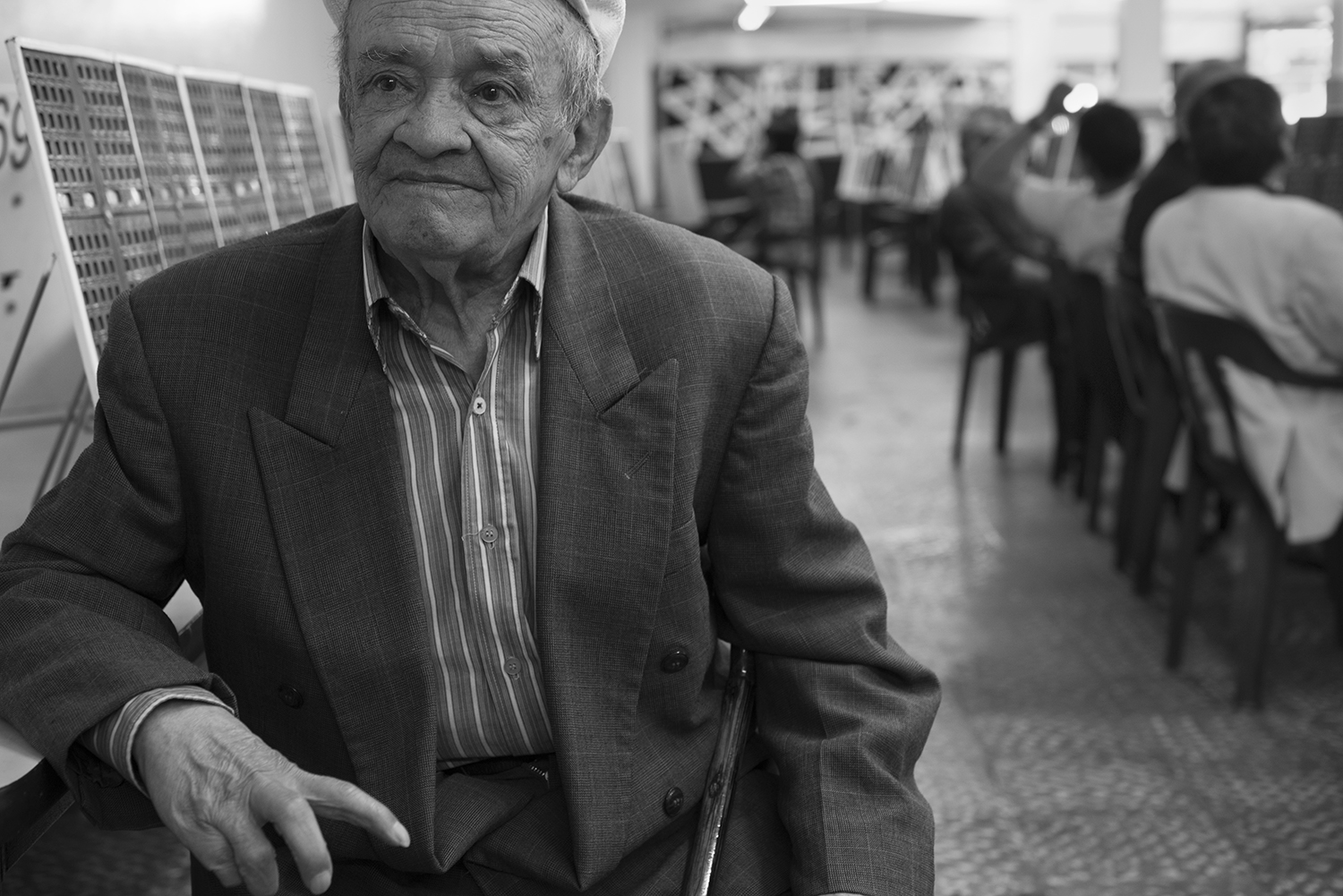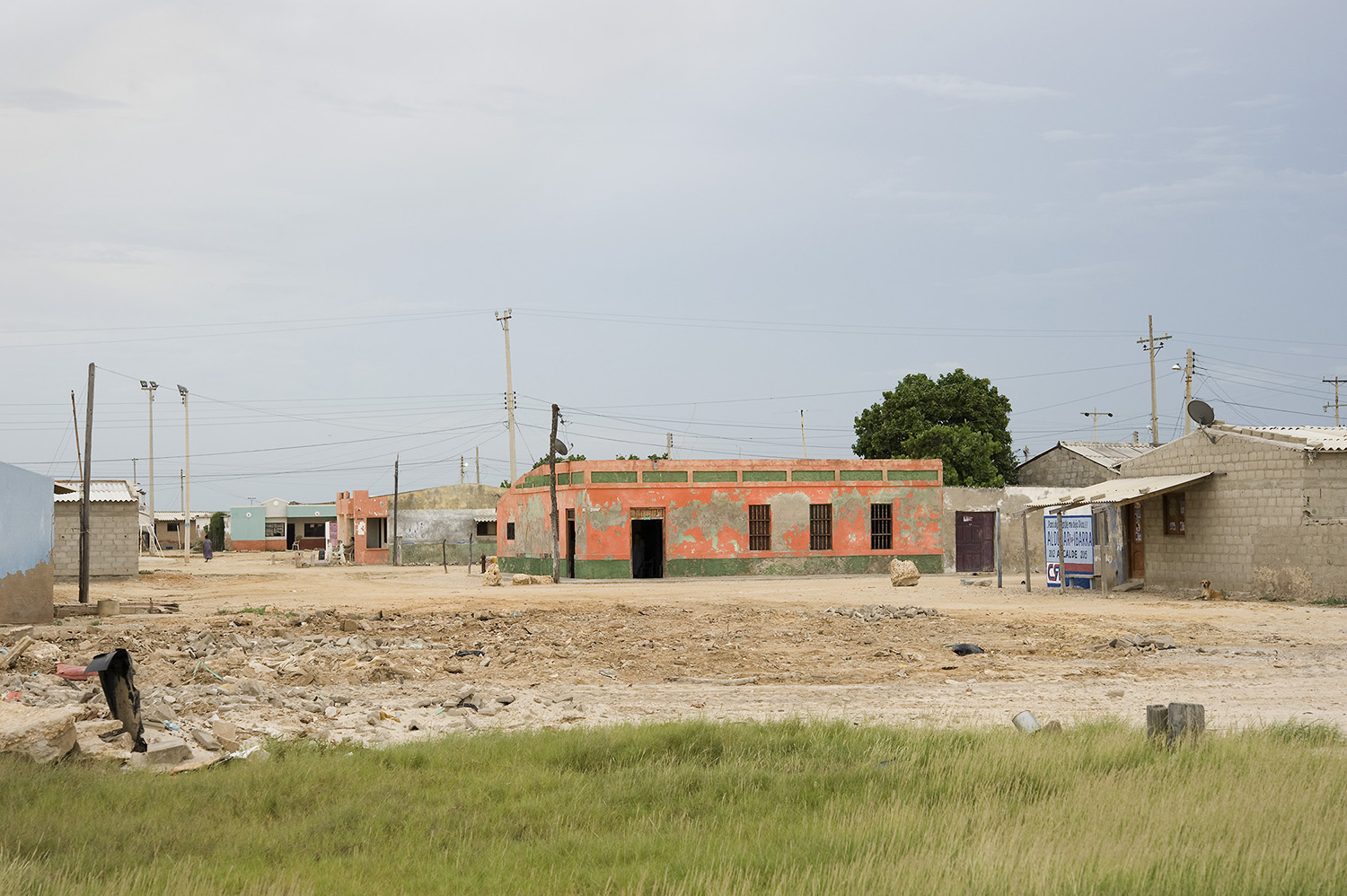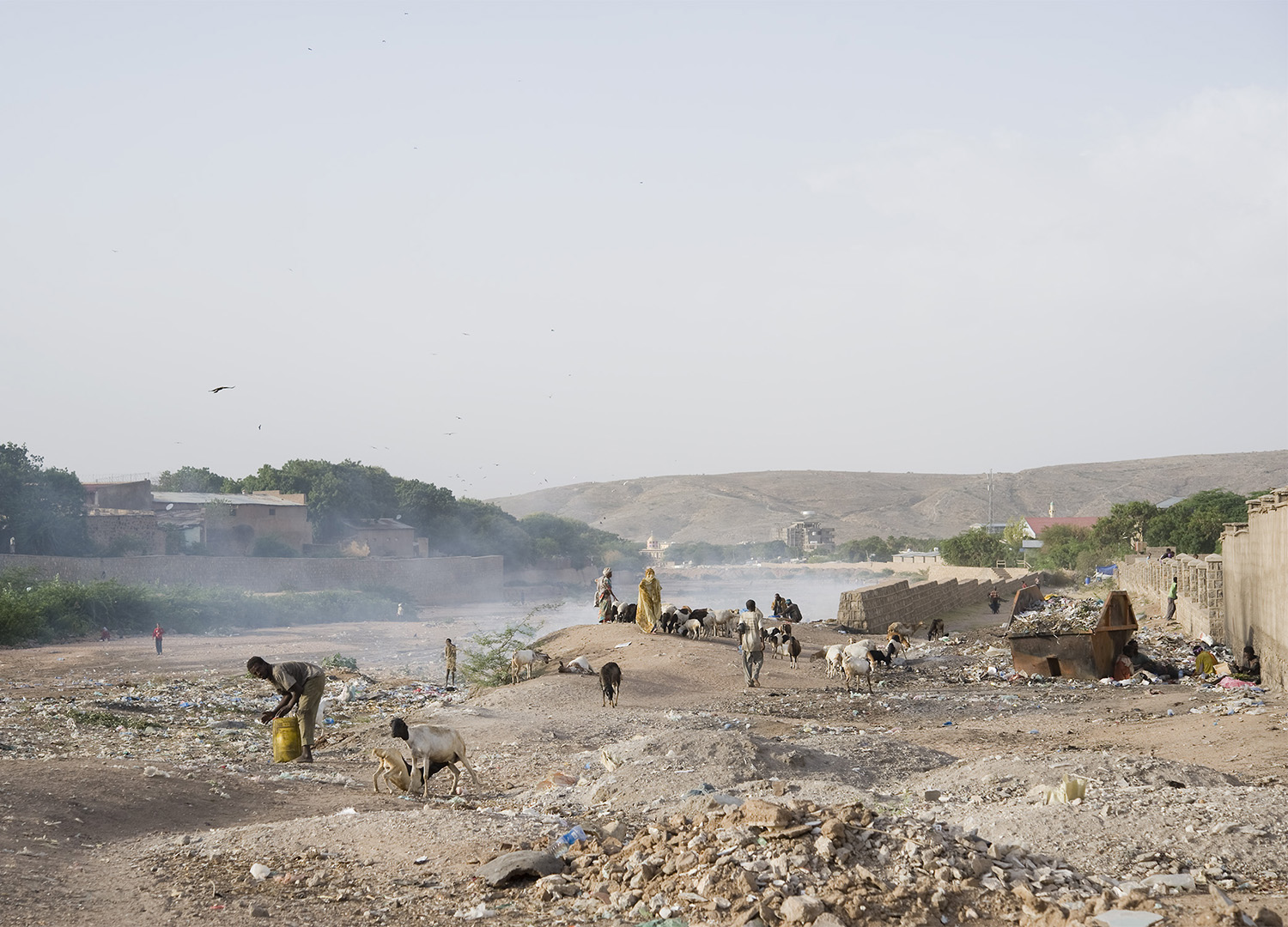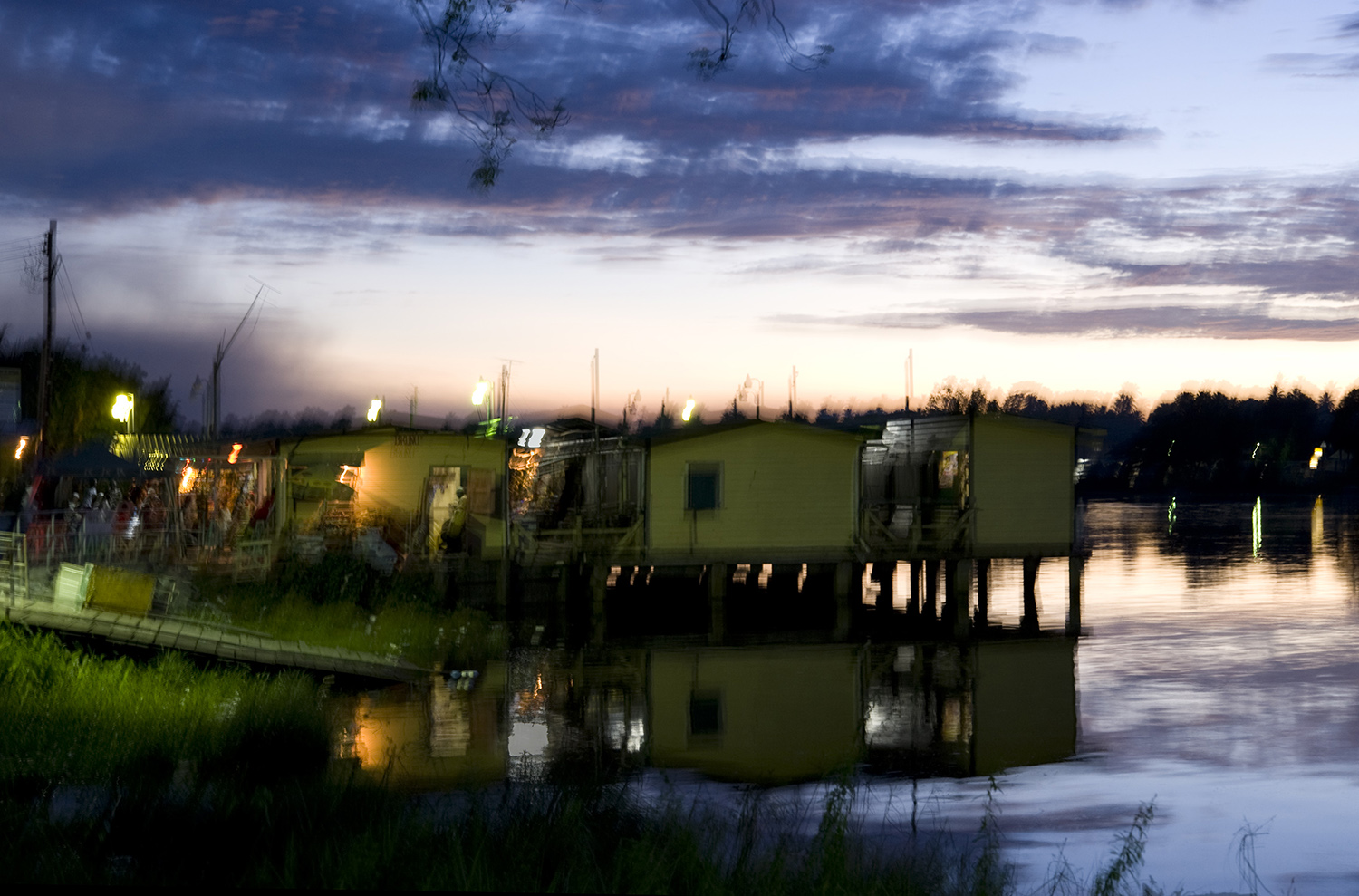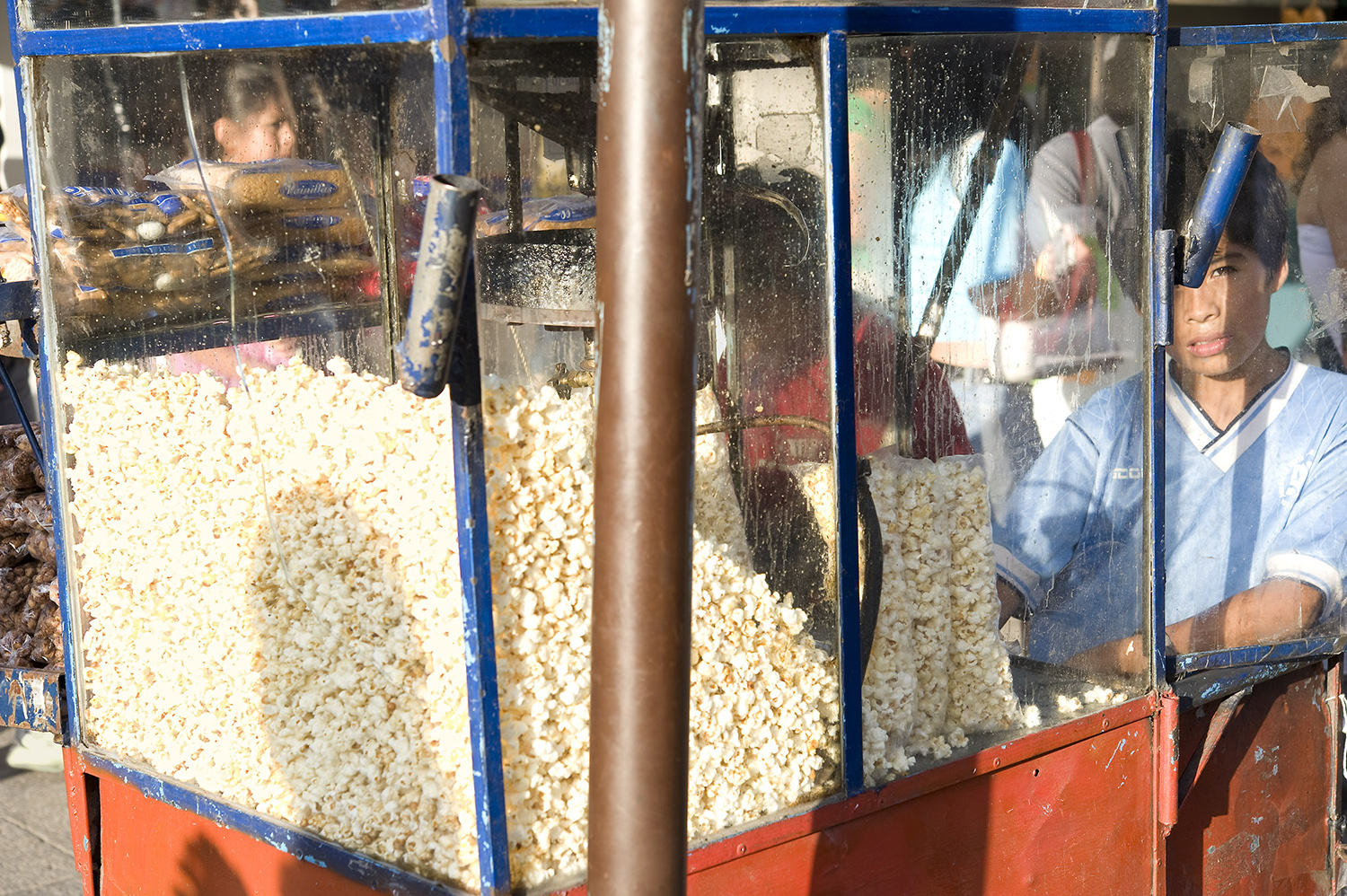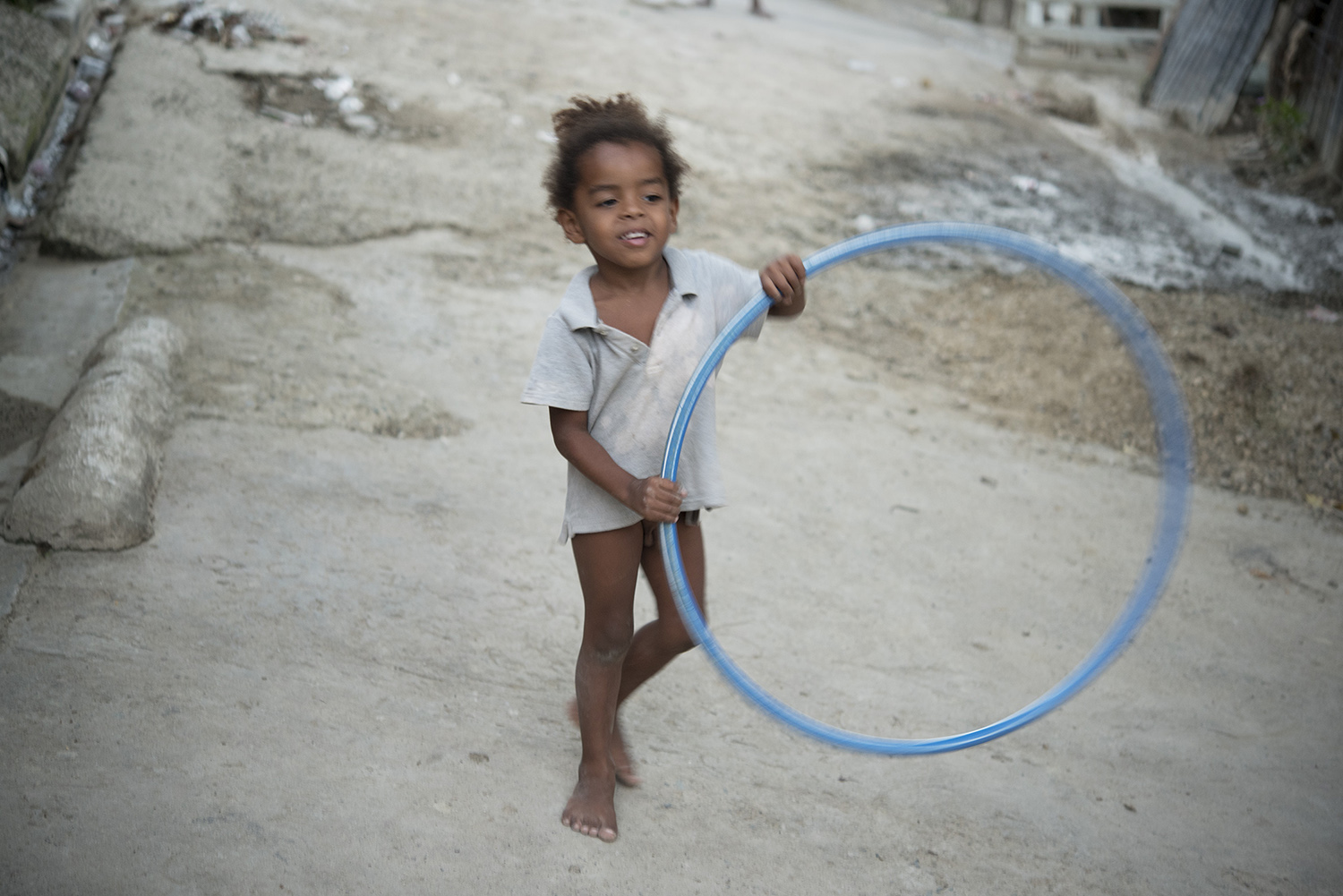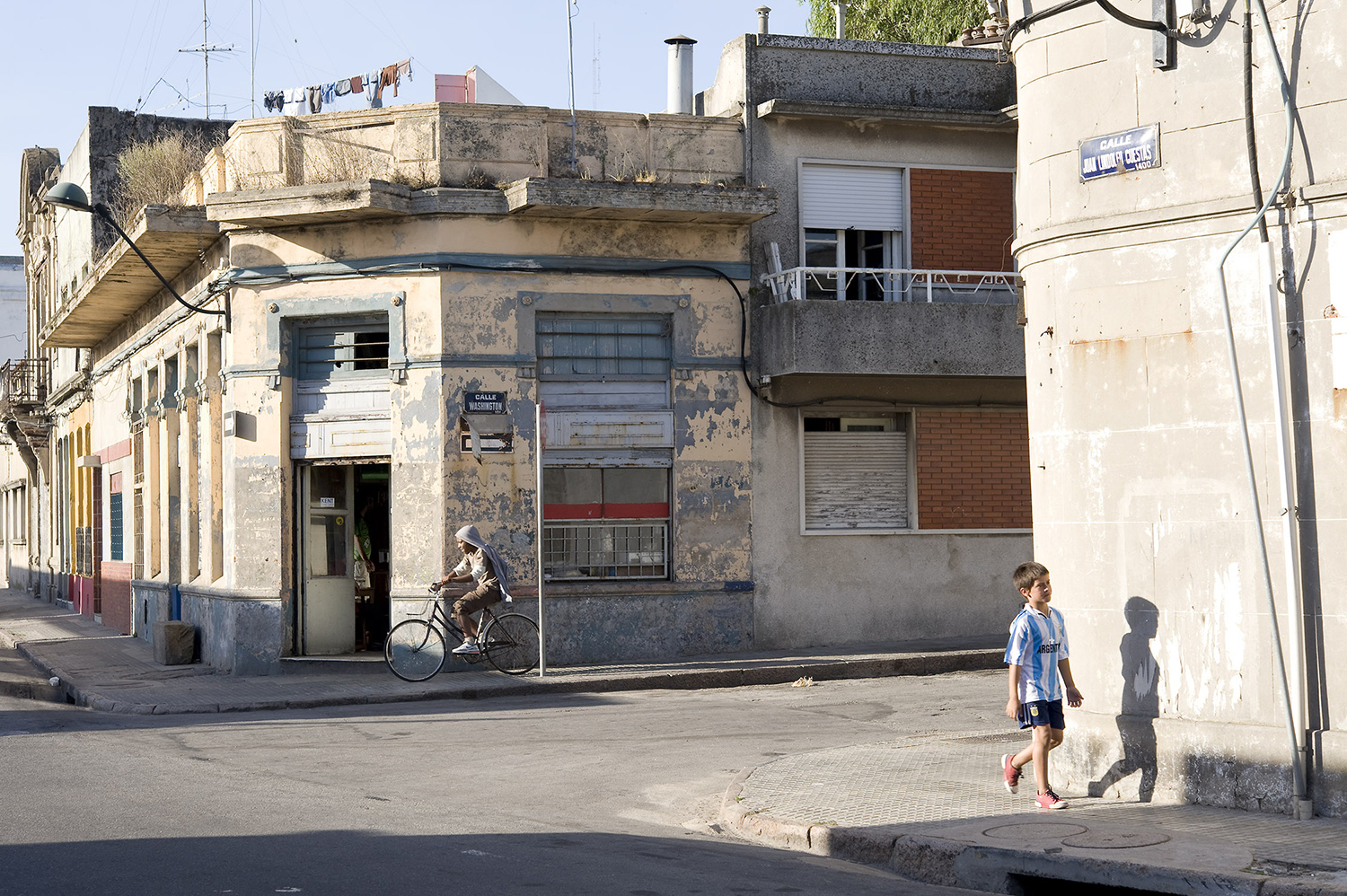My encounter with this man is one of my best travel experiences. With the early morning sun just emerging from behind the decaying downtown buildings in Cali, I saw him pushing a dolly that towered with stacked cardboard, two dogs in tow. Unlike some of his counterparts who looked menacing and openly carried dangerous-looking objects — boards with protruding nails or gnarled metal bars — he appeared thoughtful as he tenderly lifted one of his dogs onto a bench before sitting down beside it. I cautiously approached and asked if I might take some photographs of the relationship he had with his dogs. Assenting, he coaxed the dogs closer.
As I moved around, looking for the right light and angle, he began to talk about the meaning of photography. He observed that photographs capture a moment in time but don’t show what came before or will come after. That they, however, immortalize a particular instant before the world changes, never to be precisely the same again. He went on to reflect upon his life and how it led up to what I was witnessing. He had once been a country person, a farmer, but alcohol had taken a toll and, to avoid the criticisms of his neighbors, he had opted for the anonymity of the city. A constant, in both environments, had been his ongoing love for and ownership of dogs. He also spoke of what his day would look like after this short break: that he had enough cardboard to make a trip to a sales point, and that he intended to use the proceeds of his haul for a meal and then continue to search for more material to sell. Before parting ways, moved by his openness and story, I asked if we could meet the following morning so that I might bring prints of the images I had taken of him and his dogs.
The next morning I found him waiting in the same small plaza with his dogs. We sat together looking at the photographs I gave him as morning commuters rushed by and roaring busses emitted black exhaust. He was very pleased with the gift, and I was pleased with his response. I proposed that, if he had the time, I purchase coffees from a nearby vendor and we continue our conversation of the previous day. Before I could object, he walked over to the vendor, ordered, and reaching into a hidden pouch around his neck produced a small roll of bills and paid. The vendor looked at him, then looked at me and muttered, “Now I’ve seen it all.”
We sat together sipping our coffees and talked of city versus country life, New York vs. Cali, breeds of dogs, the relationship between people and dogs, the environmental crisis created by human overconsumption, the level of waste in the United States, recycling, and how his work of scavenging fit into the larger picture. For a brief interval, it didn’t feel like anything but the precise moment we were sharing in that specific location held any importance in the world. I felt a sense of timelessness. After perhaps an hour, the commuters thinned and he roused his dogs, who were lazily settled in a small patch of dirt at the base of a tree. We parted ways, each continuing his path into the future.


